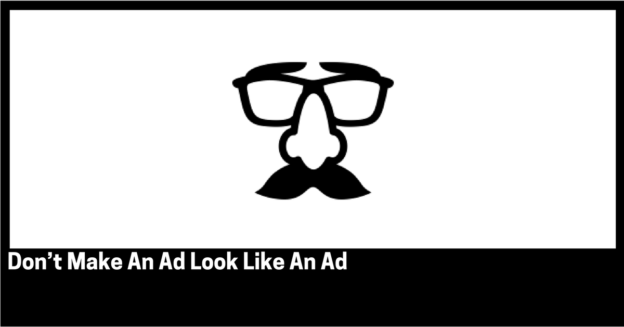We have recently seen a flood of new products, services, solutions and subsequent marketing messages (even the human body can be used as a billboard now).
But, attention is scarce and limited – prospects and customers can’t digest it all, and they distrust a lot of it.
They see on average 362 marketing messages per day.
That is approximately 100,000 marketing messages per year!
It’s impossible to take all of that information in and process it.
“Ad blockers” are on the rise to combat this situation to filter out irrelevant messages, particularly those that are marketing messages.
Cognitive psychologist George A. Miller said the human mind can only hold on average seven individual units of information in working memory at once.
99% of these messages will be missed by prospects and customers.
So, unless your marketing message stands out, as you can probably guess, it will be lost forever.
I have written about this in depth here.
Or more specifically, standing out could mean that ads should not look the same as other ads.
Which is another way of saying an ad should look like content.

This is an ad.
It doesn’t look like an ad.
But it follows a very important maxim that says: Don’t make an ad look like an ad.
There is no branding.
Here is no fancy graphic design.
I have written about both of these in depth here.
If you aren’t doing ads like this, you are probably missing out on a lot of customers.
It’s called Native Advertising.
Native advertising is a type of disguised advertising, usually, online, that matches the form, style and function of the publication upon which it appears created by its editorial staff, which mentioned before is usually content.
“Native” implies the ad is congruent with the content and other media that appears in the publication.
This is also known as Branded, Sponsored Content, Embedded Marketing or Advertorials, Product Placement.
As it closely reflects the content and other media that appear in the publication, it can confuse customers as to its nature, that is an ad that doesn’t look like an ad and unduly influences their purchasing decision, so there has been a push for disclosure of this type of advertising by the American Federal Trade Commission.
Moreover, this ad is not unique or new at all.
In fact, this style has been around for a long time.
Arguably one of the best advertisers who has ever lived used this style of ad decades ago.
His name is David Ogilvy, and he was an advertising executive who founded Ogilvy & Mather.
He was widely hailed as “The Father of Advertising.”
Time Magazine called him “the most sought-after wizard in today’s advertising industry.”
If it is good enough for David Ogilvy, it is good enough for you.

